Natsumatsuri, Tanabata, Obon… There are many summer events in Japan that are symbolic of the season and are looked forward to. Some of them are well-known while others are not as well heard of.
In this article, we introduce the summer events in Japan to look forward to and enjoy during the hotter seasons in Japan. Learn their significance, origins, history and use them as reference for a true cultural experience.
Table of Contents
- Classic Summer Events in Japan
- Traditional Summer Events in Japan
- Summer Events in Japan that Have Grown Popular Recently
- Summer Food Events in Japan
Classic Summer Events in Japan

Natsumatsuri / 夏祭り

Natsumatsuri, aka “Summer Festivals”, is THE event of summer. They are held across Japan from July to August, and enjoyed by children and adults alike.
A classic summer festival is Ennichi (縁日), characterised by rows of stalls (屋台, Yatai). Ennichi is a day that is strongly related to Shinto and Buddhism, it is a day that is believed to grant great blessings if visiting a temple or shrine. Shrines and temples often hold festivals on this day. In addition to food stalls selling takoyaki, candied apple, kakigori etc., there are also game stalls with goldfish scoping, yo-yo fishing, etc. traditional festival games. As for large-scale natsumatsuri, there are fireworks festivals, parades etc. with special events.
Originally, natsumatsuri were held to ward off pests and typhoons. Also, since summer is a time when infectious diseases are prevalent, it is said they were also held to pray for protection from epidemics. Nowadays, natsumatsuri has become a joyful event to enjoy with family, relatives and acquaintances, as well as to beat the summer heat.
Read more about Natsumatsuri and what to expect here.
Hanabi Festival / 花火大会
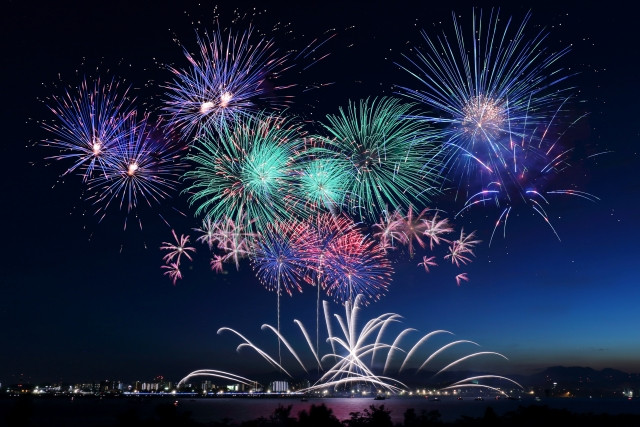
Hanabi, or fireworks, festivals are also one of Japan’s summer symbols. Many Japanese can feel the spirit of summer when they see giant fireworks lighting up the summer night sky.
Fireworks are used in many parts of the world to celebrate joyous occasions. However, in Japan, fireworks festivals were originally meant to commemorate those who have passed away. During the Edo period, when many people died from epidemics and famine, fireworks were set off to mourn the deceased. Which is why, even till the present day, hanabi festivals are held mainly during the Obon period (August 13th to 16th).
Read about the Best Fireworks Festivals in Japan here.
Bon Odori / 盆踊り
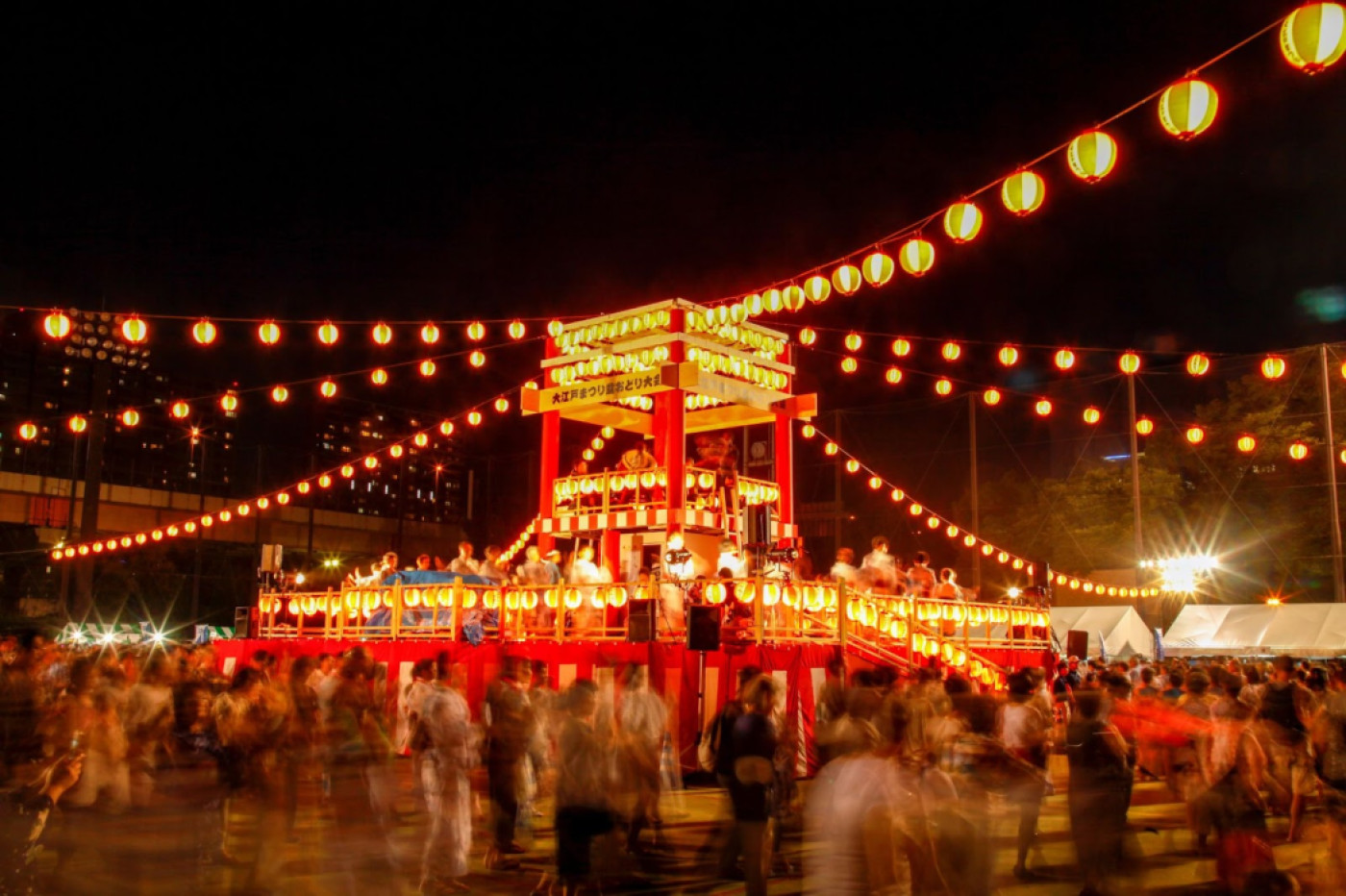
Bon Odori is a dancing event that is held during the Obon period. Originally a sacred event to entertain the spirits of ancestors, it has now become a form of entertainment for the common people to mingle, meet and have fun. In modern times, it is often held as part of natsumatsuri.
For Bon Odori, a wooden platform called a 櫓 (Yagura) is set up in the center, and people dance around it to the beat of Ondo (音頭), a genre of Japanese folk music. There are dances that are meant as a performance, while some are open to anyone to participate. The dance is not difficult, so if you see a bon odori that allows free participation, then imitate the moves and get dancing!
Gion Matsuri / 祇園祭
The Gion Festival is one of Japan’s most famous festivals. It is a religious festival held at Kyoto’s Yasaka Shrine for a month starting from July 1st. Among which the events held on the 17th and 24th, the “Mikoshi Parade (神輿渡御, Shinyo Togyou)” and “Float Procession (山鉾巡行, Yamaboko Junkou)” are the most famous. The lively sight of 3 Mikoshi and 34 Yamaboko floats passing through the streets is the highlight of Gion Matsuri. The lavishly decorated Yamaboko floats called “Moving Art Museums (動く美術館, Ugoku Bijutsukan)” are registered as intangible cultural heritages.
Fun fact, Gion Festival is actually a festival that is held all over Japan. The term “Gion Matsuri” is a collective term for summer festivals held at branch shrines of Yasaka Shrine, as well as shrines that worship the same God.
Kyoto Gozan no Okuribi / 五山の送り火
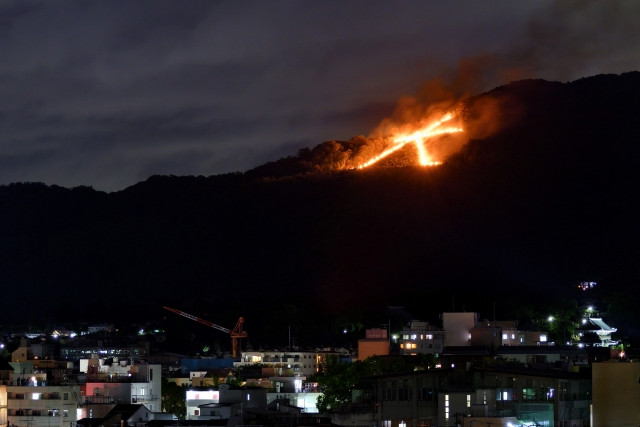
Kyoto’s Gozan no Okuribi is a traditional bonfire event held on August 16th at Mt. Nyoigatake and other places. 5 characters are drawn and lit with flames on 5 mountains, the 5 characters are 大, 妙 or 法, 大 again, a figure of a boat, and a figure of a shrine gate.
The purpose of the bonfires is to send off the spirits that returned to the human realm for Obon back to the afterlife. All Gozan no Okuribi are registered as intangible cultural heritages of Kyoto, and they have become a famous summer tradition.
Writer's Pick
Traditional Summer Events in Japan
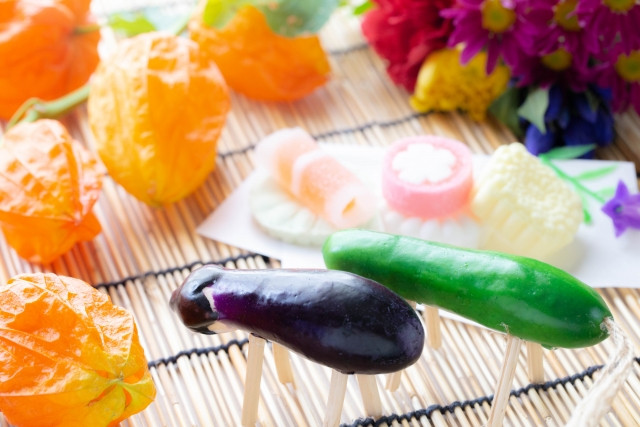
Tanabata / 七夕
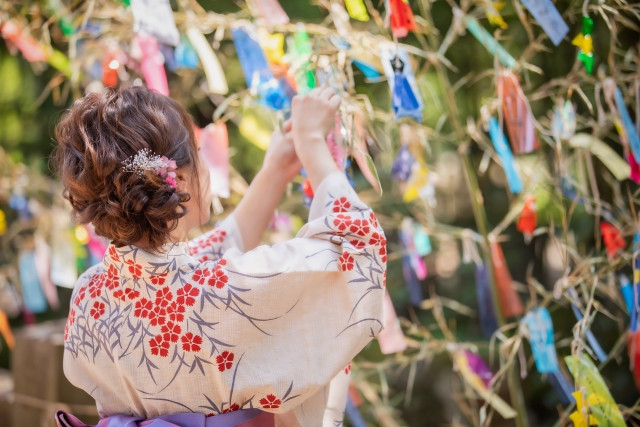
Tanabata is a traditional summer event celebrated on the 7th of July. Wishes are written on colourful paper strips called Tanzaku (短冊) and hung up on bamboo leaves for Tanabata. There is also the famous legend of Orihime and Hikoboshi who can only meet once a year by crossing the Milky Way. The culture of Tanabata was originally from China. It was spread to Japan during the Nara period and overlapped with various Japanese customs to create the Tanabata tradition we have now.
Read the legend of Orihime and Hikoboshi, and other Tanabata traditions here.
Obon / お盆
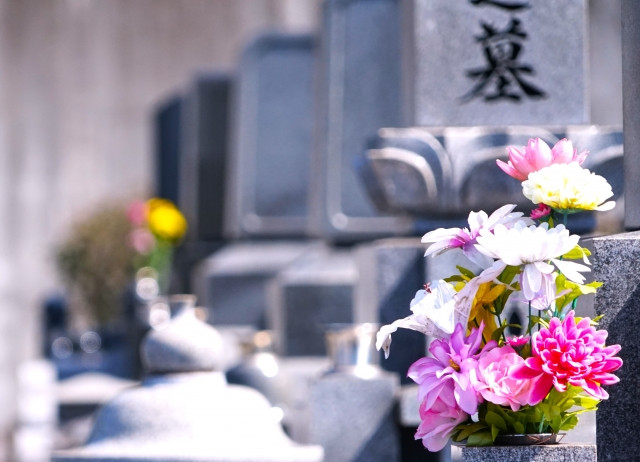
In Japan, the 3 to 4 days period from August 13th to 15th / 16th is called “Obon (お盆)”. Obon period is when the spirits of our ancestors return from the afterlife to our realm. During this period, many schools and companies will have a long holiday called “Obon Holiday (お盆休み)”.
How to spend Obon varies by region and families, but generally people visit graves and make offerings. In recent years, there are more people who spend the Obon Holidays leisurely with family and friends.
Obon’s official name is “Urabone (盂蘭盆会)”. It is derived from the Sanskrit word “Ullambana” and originated from a Buddhist legend. The legend overlapped with Japanese custom of worshipping ancestors and became a tradition where families gather together to remember the deceased.
Chuugen / 中元
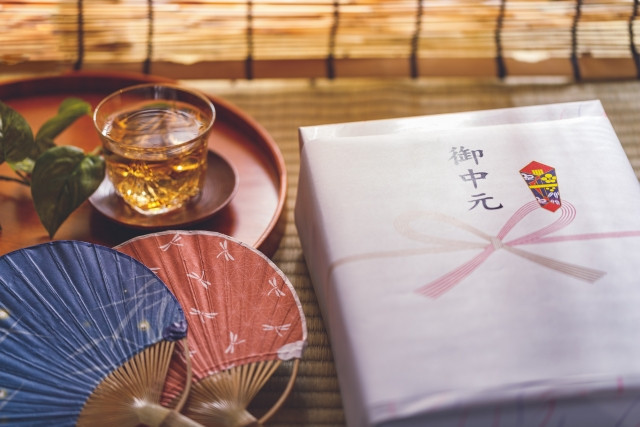
O-Chuugen is a summer tradition of sending gifts to people you are indebted to or grateful to. Beer, juice, soumen, fruits, etc. are common gifts for Chuugen. The period for sending Chuugen differs by region, but generally it is anytime within a one month period from July 1st to August 15th.
O-Chuugen was originally a holiday for Chinese Taoism. In Taoism, there is a tradition of making offerings to God on Chuugen Day (Lunar Calendear 15th day of the 7th month), and this custom was later introduced to Japan. It became associated with “Bonrei (盆礼)” custom of giving presents to people during the Obon period. The Chuugen custom first spread among the upper classes, but during the Edo period was practised by the common people as well.
Another custom during the summer is sending summer greetings in the form of postcards called “Shochuu Mimai (暑中見舞い)”.
Summer Events in Japan that Have Grown Popular Recently
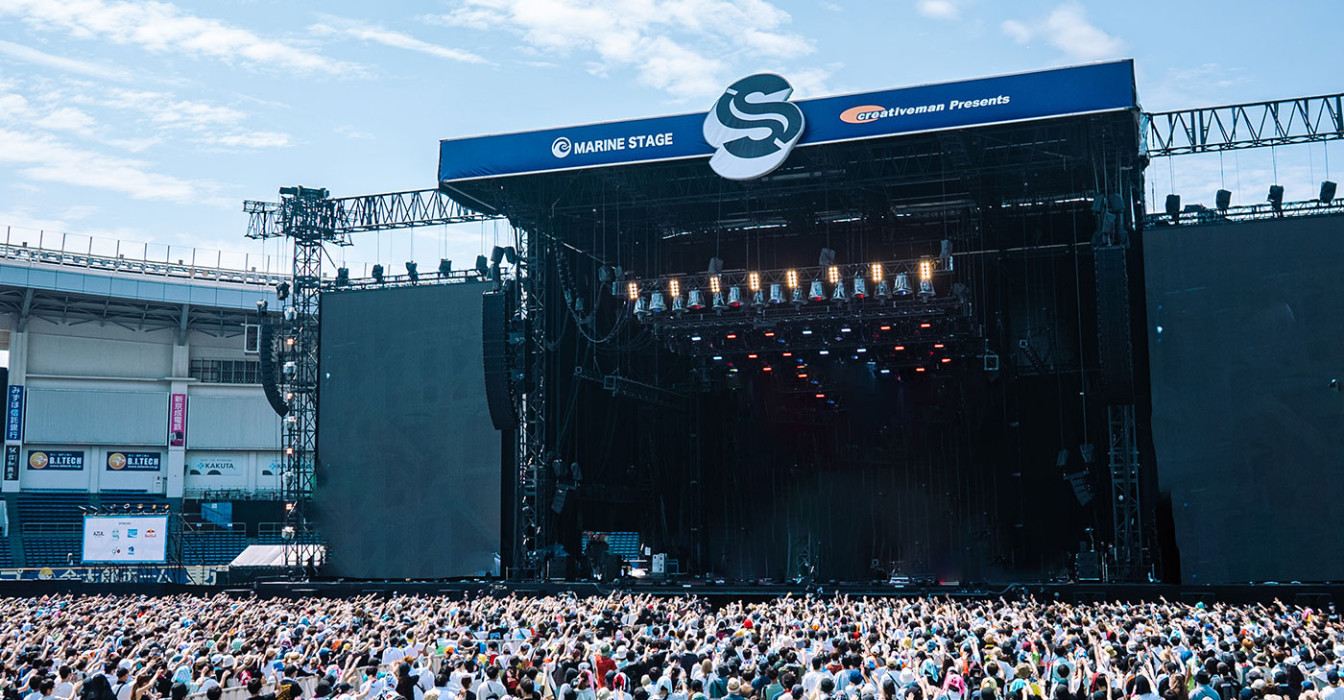
Koshien / 甲子園
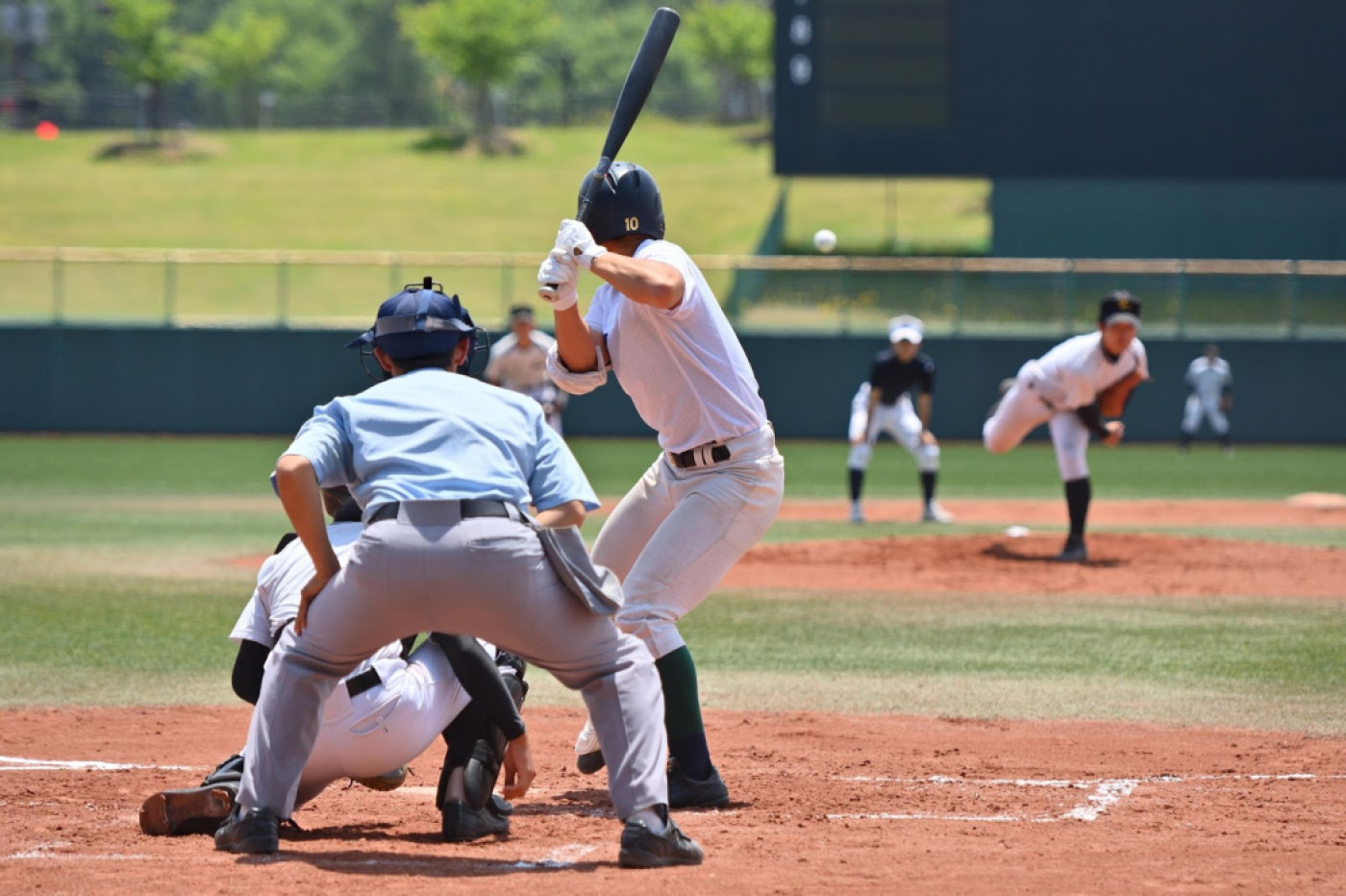
Koshien is a high school baseball tournament held in the summer. The official name is “The National High School Baseball Championship (全国高等学校野球選手権大会, Zenkoku Koutou Gakkou Yakyuu Senshuken Taikai)”. The name “Koshien” comes from the “Hanshin Koshien Stadium” where the tournament is held.
Koshien is held in spring and summer, but the summer Koshien is the more exciting and popular one. The tournament style is such that you’re out of the tournament once you lose, so all the players try their best. Spectators are captivated by the exciting and thrilling matches, and their hearts leapt at unexpected dramatic moments. There are many anime and manga that are based on Koshien.
Comic Market (Comiket) / コミックマーケット
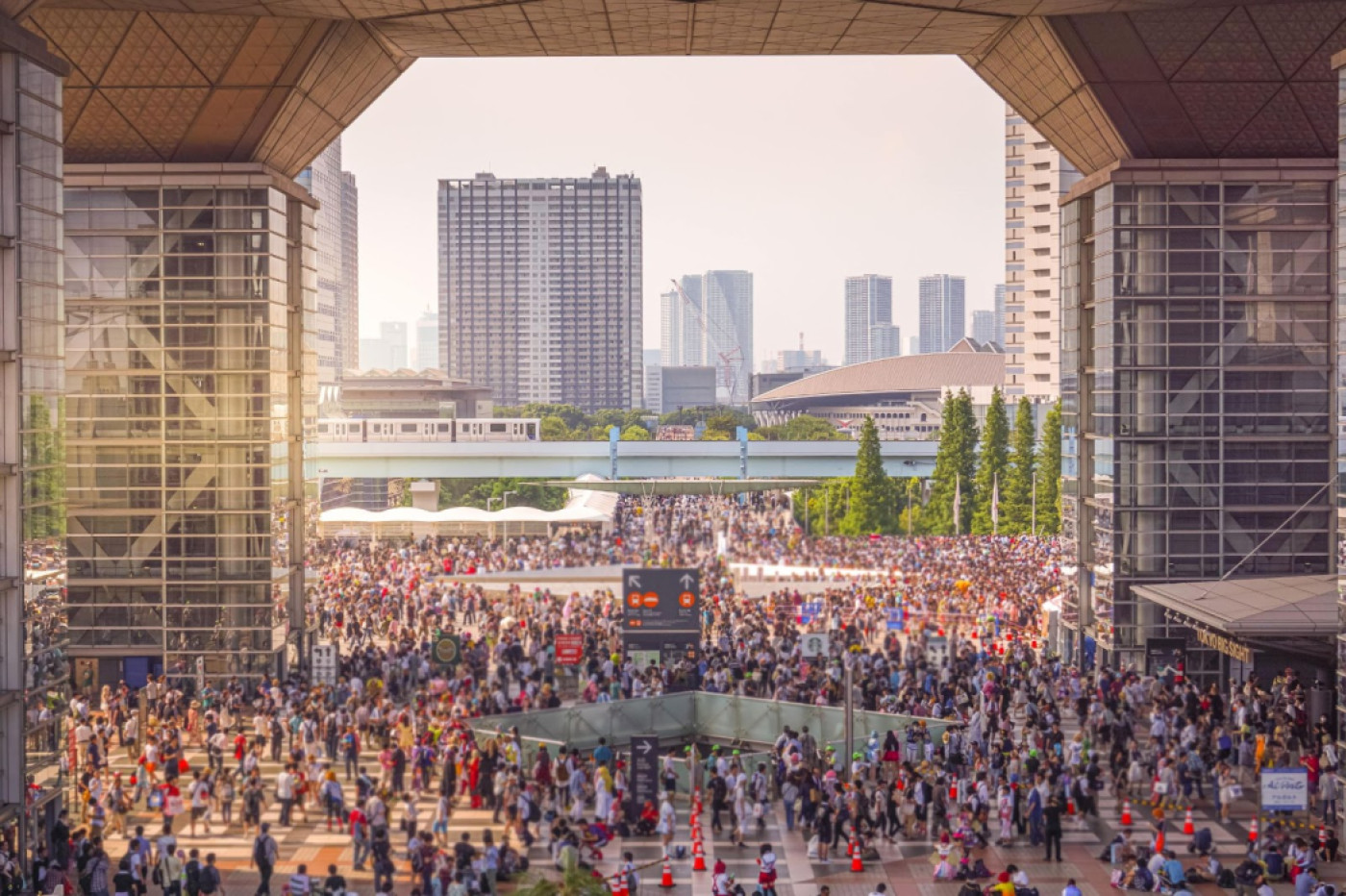
Comiket is the biggest doujinshi sales event in the world. It is held at the Tokyo International Exhibition Center in August and December, with the one held in the summer known as "Summer Comiket." Doujinshi (同人誌) are fan-made magazines or comics based on anime, manga or games. Fans use their imaginations to create these works. Additionally, a wide range of goods to the theme of railway, military, gourmet, travel etc. themes are also sold, it is a place where people can freely express the love for their hobbies.
Comiket is very crowded with 500,000 to 600,000 thousand participants over 3 days. The venue is very hot, so be careful of heatstroke and take proper preventive measures.
Music Festivals

Music festivals such as the Fuji Rock Festival and Summer Sonic have also become summer hits. Famous artists in Japan and from abroad participate in these events attracting music fans from all over the world. Many events are held outdoors, and people enjoy music while eating and drinking under the summer sky.
Summer Food Events in Japan
Midsummer Ox Day / 土用の丑の日
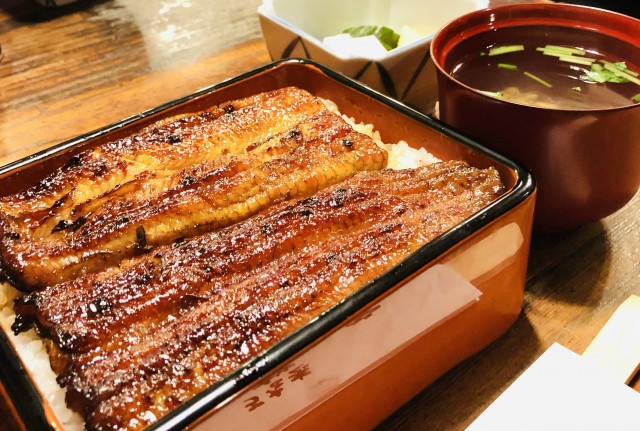
Japan has a custom of eating unagi (eel) on Midsummer Ox Day. “Doyou (土用)” refers to the 18 days before the beginning of spring, summer, autumn and winter. “Ushi no Hi (丑の日)” refers to the “Day of the Ox” which is based on the zodiac and comes every 12 days. As such, though “Doyo Day of the Ox” occurs several times a year, when people say “土用の丑の日 (Doyou no Ushi no Hi)”, they usually refer to the one in summer.
Midsummer Ox Day falls during the hottest period of summer when it is easy to suffer from summer fatigue. It is believed since the olden days that eating things that start with “う (u)” to stay healthy. Umeboshi (picked plum), udon, uri (melon), etc. are also commonly eaten. There are various theories about how unagi became so popular, but the most famous theory is that it was because of a successful advertisement by Hiraga Gennai.
The season for unagi is in autumn and winter, and so hardly sold in summer. Troubled by the difficulty of selling unagi during the summer, an eel shop owner consulted with Hiraga Gennai who suggested putting up a sign that read “Ox Day”. When he did so, the shop became a huge hit. Other shops nearby followed suit, and so the custom of eating unagi on Midsummer Ox Day became widespread.
Hangeshou / 半夏生
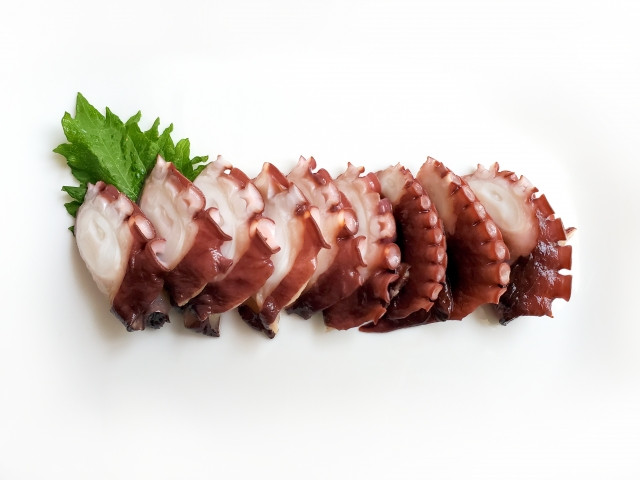
There are regions in Japan that have a custom of eating octopus and udon on Hangeshou. Hangeshou is one of Japan's seasonal days called “雑節 (Zassetsu)”, a notable one is Setsubun in February. Hangeshou is 11 days from the summer solstice which is usually around July 2nd. Hangzhou is a day that acts as a guideline for farmers to finish field work and rice planing. This is because it marks the latter half of the rainy season. Some regions also take a break from farm work for 5 days from July 2nd to July 7th for Tanabata.
Octopus is eaten on Hangeshou with the hope that “the rice ears will take roots as plentiful as octopus legs”. This is the custom in Kansai, while in Kagawa Prefecture they have udon, and in Fukui Prefecture they have mackerel. The food eaten for Hangeshou differs by region.
Tanabata / 七夕
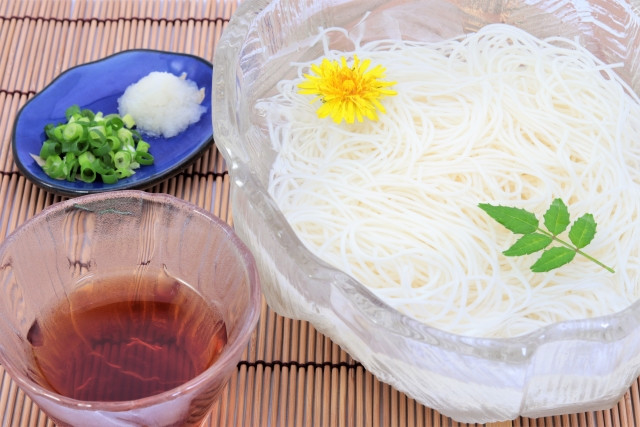
Soumen is a food that symbolises summer in Japan. Many families eat soumen on a daily basis during the summer. But it is especially eaten on Tanabata (July 7th) as part of traditional custom. There are various theories about why soumen is eaten for Tanabata including “soumen noodles represent the Milky Way”, “soumen noodles represent thread so people eat it to pray for better sewing skills”, and “it is modified from a Chinese snack called Sakubei”.
There are many other summer foods that are representative of the hottest months in Japan, discover 40 Japanese Summer Foods here.
To Close
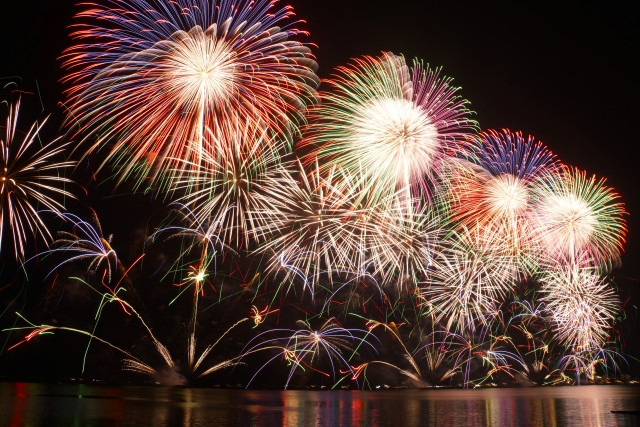
There are many interesting and unique summer events in Japan. The ones we have introduced are classic ones that evoke nostalgia and “summer vibes” in many Japanese. Let’s get a feel of the Japanese summer atmosphere by experiencing these summer events.




















 (2).png)














